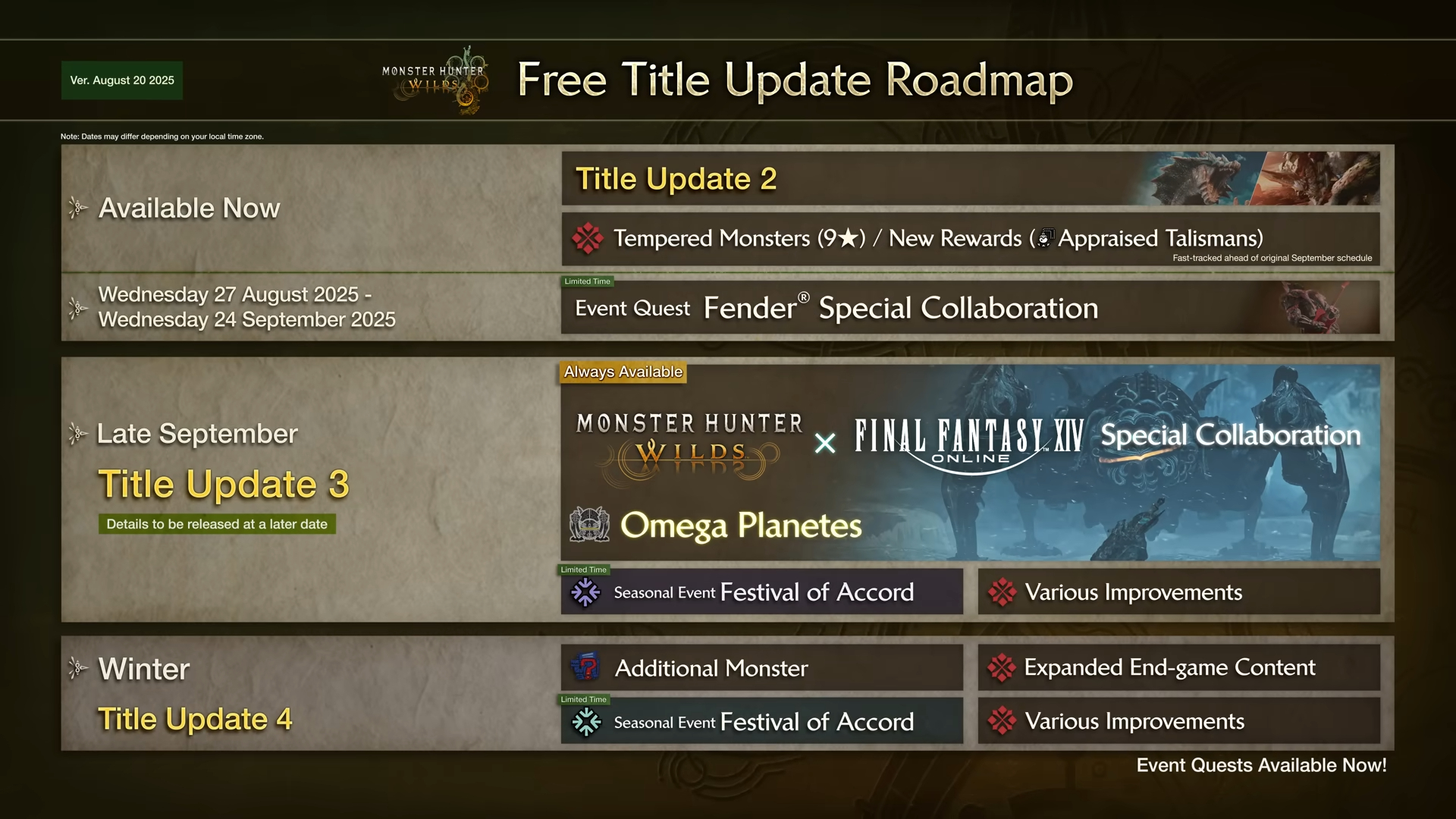
Capcom is urging PC players of Monster Hunter Wilds to weather a few more months of technical turbulence—at least until winter’s chill brings the much-anticipated Title Update 4. For gamers battling through erratic frame pacing and stubborn CPU bottlenecks, waiting for this patch feels strikingly similar to camping a rare monster: the anticipation is relentless, every detail scrutinized. As Title Update 4 takes its place in community lore, questions arise: Can Capcom deliver notably improved play in time? And, perhaps more importantly, will this patch mark a turning point for high-end PC gaming across the industry?
Monster Hunter Wilds PC: Title Update 4 Promises Real Change, Not Just Band-Aids
In recent days, Capcom has acknowledged a reality many Monster Hunter Wilds players have dealt with since launch—performance woes that are impossible to ignore. Through an official statement, the company confirmed that highly efficient CPU and GPU optimizations are being targeted for release in Title Update 4, slated for a winter rollout in 2025. For now, users with even the most powerful hardware may keep experiencing inconsistent frame rates and general sluggishness.
The scope of these future fixes signals more than a series of ad-hoc tweaks. By planning a significant upgrade months out, Capcom appears committed to addressing deep-seated performance challenges, building something exceptionally durable rather than offering temporary relief. While the delay tests patience, this strategy could be remarkably effective in cultivating a long-term, stable platform for PC gamers.
Patience or Frustration? Weighing the Wait for Performance Updates
Any long wait for optimization can feel agonizing—especially for PC fans accustomed to highly efficient, ultra-fluid experiences. Yet, as seen with recent cross-platform launches like Cyberpunk 2077, balancing cutting-edge engines with widespread legacy hardware is a challenge even the industry’s top names are grappling with. Over the past few years, players have evolved into savvy system architects in their own right, keenly aware of what their rigs should deliver.
By delaying until winter, Capcom’s developers have secured time to conduct a notably thorough rework. According to Eurogamer, the team is going far beyond superficial bug-fixing. Instead, they are focusing on targeted enhancements to CPU threading and GPU resource allocation—investments that could result in highly efficient texture streaming, more reliable draw distances, and smoother interactions, particularly on mid-range hardware struggling today.
Looking Ahead: What Might Winter’s Optimization Update Bring?
So, as the months roll forward, what can PC hunters expect once Title Update 4 lands? While specifics are mostly under wraps, Capcom’s track record offers well-grounded speculation. Previously, performance updates for Monster Hunter have introduced dynamic resolution scaling, more advanced anti-aliasing, and expanded support for next-generation graphics APIs like DirectX 12.
Meanwhile, gaming circles are buzzing over the possibility of machine learning-powered upscaling such as DLSS and FSR. If implemented, these features could be particularly beneficial for squeezing high-fidelity visuals from modern mid-tier cards, significantly reducing GPU strain. By investing now in such forward-thinking technologies, Capcom could shift Monster Hunter Wilds from resource-hungry oddity to a benchmark of remarkably smooth gameplay, ultimately distinguishing itself from studios that focus on flash over foundational quality.
Community Voices: Frustrated but Still Hopeful
In forum threads and social feeds, reactions have ranged from heated complaints to cautiously optimistic takes. It’s impossible to ignore the chorus of players detailing persistent issues—frame drops on top-tier rigs, unnecessarily high CPU activity, and stuttering even on machines built to handle far more. Yet, a contingent of fans remains encouraged by Capcom’s transparent communication, seeing it as exceptionally clear compared to the radio silence many AAA developers resort to.
“As a gamer with a 3080 Ti paired with a Ryzen 9, experiencing constant lag, I know that optimization isn’t just about hardware—it’s mostly about clever engineering,” shared one frustrated but hopeful player. Comments such as these crystallize a truth for today’s audience: they’re willing to wait for a notably improved product, provided companies are forthright and direct. For Capcom, this winter deadline is as much about rebuilding trust as it is about unlocking hardware’s true potential.
Beyond the Lag: What This Means for the Future of PC Gaming
The obstacles facing Monster Hunter Wilds reflect larger tides across AAA gaming. High graphical standards are not luxury—these days, they’re baseline expectations for PC players. As studios chase ever-larger worlds and more immersive tech, optimization gaps risk eroding player loyalty. Developers unwilling to prioritize and deliver significant performance updates increasingly stand apart—for the wrong reasons.
Yet, Capcom’s willingness to hold back and invest heavily in a major winter patch could reshape industry norms. Through thoughtful engineering, open communication, and methods like leveraging AI-powered diagnostics and enhanced user feedback systems, Monster Hunter Wilds could shift from a troubled launch into an industry case study on turning things around. If Capcom succeeds, it will not only extend this title’s active lifespan but also signal what’s possible with patience and sustained support.
| Feature | Current Issues | Expected Fix in Update 4 |
|---|---|---|
| CPU Utilization | Unusually high load, especially in busy scenes | Significantly optimized threading, streamlined background processes |
| GPU Load Balance | Frequent frame stutter and pacing inconsistencies | Highly efficient frame rendering and distribution |
| Texture Streaming | Delayed asset pop-in and memory bottlenecks | Remarkably improved memory allocation and streaming |
| Graphics API Enhancements | Limited use of advanced DX12/Vulkan features | Broader support for modern APIs |
| Adaptive Resolution | No upscaling technology implemented | Potential integration of DLSS/FSR or equivalents |
As winter approaches and anticipation grows, Monster Hunter Wilds PC players are reminded that building greatness often means biding your time. Optimization, after all, is less about patching cracks and more about building an exceptionally strong foundation. Judging by Capcom’s recent history, such commitment usually pays off.
Meanwhile, staying plugged into Capcom’s updates and trusted outlets such as Eurogamer will ensure fans are the first to hear when patches drop or roadmaps shift. Monster Hunter Wilds may be unpredictable now, but when this winter’s sweeping changes hit, it stands poised to set a remarkably effective new benchmark for PC performance.



